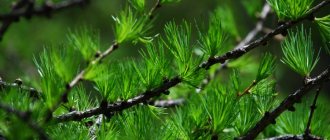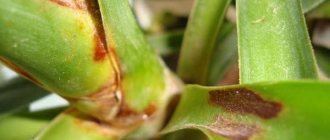Cinquefoil (Potentilla) belongs to one of the largest genera in terms of the number of species, which is included in the rose family. Its prominent representatives are considered to be Potentilla erecta (galangal grass) and Potentilla goose. Most of the species of this genus can be found in natural conditions in the Northern Hemisphere. Cinquefoil comes from the Latin word "potent" - "powerful, strong." Apparently, this refers to the incredible healing power of individual representatives of this kind. There are approximately 500 species of cinquefoil all over the world, which are represented mainly by herbaceous plants, but there are also shrubs among them. At the same time, grass and shrubs belonging to this genus are cultivated in gardens. The cinquefoil shrub in Russia is called Kuril tea or cinquefoil, and there is an ancient legend that tells about Ilya Muromets, the smell of cinquefoil gave him unprecedented strength. Russian healers also call cinquefoil the mighty one, and since ancient times it has been used to heal a variety of ailments, as well as to restore strength. Today, this plant is mostly used as an ornamental plant, and experts plant it on a green lawn as a tapeworm, and they also decorate borders, alpine slides and hedges.
Description
A plant with erect, ascending or creeping stems that, in contact with the ground, take root. The root system is superficial. Pinnate or multipartite leaves with stipules, green or gray-green.
The flowers are saucer-shaped and usually consist of five petals; collected in inflorescences, sometimes solitary. They are located at the ends of the shoots and are most often yellow, but there are white, pink, cream and orange. Pollinated by wind or with the participation of insects; After three weeks the fruits appear.
Composition and medicinal properties
Erect, white and goose varieties of cinquefoil are often used in medicine as a folk remedy. All parts of the cinquefoil are used to make potions. Currently, herbal decoctions, alcohol infusions or medicinal teas are prepared.
Castor bean: planting, growing, care and maintenance at home and outdoors (115 photos and videos)Bergenia - tips for properly growing a medicinal plant. Features of collection, application and contraindications (130 photos and videos of planting in the ground)
Cloudberries: beneficial properties, features of cultivation and use. Planting, care and propagation with your own hands (150 photos and videos)
Natural remedies have a positive effect on the functioning of the gastrointestinal tract, improve the treatment of pancreatitis, gastric ulcers, and help eliminate kidney stones.
By preparing a decoction of cinquefoil, you can cure colds and coughs, because it has an expectorant effect. The herb also has a positive effect on kidney function.
Cinquefoil is rich in beneficial acids and flavonoids. An infusion of alcohol has a beneficial effect on the functioning of the thyroid gland. At the same time, cinquefoil is used externally in the treatment of burns, as well as to stop various types of bleeding. Thanks to it, you can finally cure fungus, or diseases of the oral cavity such as stomatitis or periodontitis.
Types and varieties
There are about two hundred species of cinquefoil and many ornamental varieties. For cultivation on the site, perennials are most often used, the flowering of which lasts from May to September. Many species are medicinal.
Erect
Another name for this cinquefoil is galangal; a plant with straight thin shoots up to 20-50 cm long, branching at the top. The root leaves are trifoliate or five-fingered, the stem leaves are of three plates, sessile. Flowers are solitary, golden yellow; unlike other species, they consist of 4 petals.
Gusinaya
Herbaceous ground cover perennial 5-20 cm high. Creeping rooting shoots reach a length of 70-100 cm. The root leaves are openwork, pubescent below. Yellow small flowers bloom singly, from early May to late August, and have a pleasant aroma.
Nepalese
Decorative perennial, grows up to 30-50 cm. The stems are branched, bright red with palmate leaves, the color of which, depending on the composition of the soil, varies from green to dark red. Pink or orange flowers with dark veins. Propagates well by seeds.
Popular varieties:
- Miss Wilmont;
- Floris;
- Fiery flame.
White
A rare perennial, its height does not exceed 25 cm. It has a thick brown fusiform rhizome and thin branched ascending stems. Silvery pubescent five-fingered leaves form basal rosettes.
White flowers are arranged in groups of two or three on long stalks. Prefers shady places, does not like waterlogging, grows very slowly.
Brilliant
The most whimsical sun-loving cinquefoil. Low spreading bushes up to 5-10 cm form a dense carpet. Silver-green foliage is combined with pink or lilac flowers. It grows on dry sandy soil with humus and crushed limestone and requires good drainage.
Silver
Arched stems with compound palmate silvery leaves reach 30 cm in height. Flowers in loose panicle inflorescences, silvery-yellow. Grows on sandy soils, meadows, and ravines; good honey plant.
Blood red
An unpretentious ornamental plant, straight branched stems up to 60 cm. The foliage is trifoliate, light green on top, white tomentose on the underside. The flowers are large, red, collected in corymbs or panicles.
Hybrid
This species is represented by garden forms of cinquefoil, obtained by using many species. Plants with straight branched pubescent stems, 30-90 cm high. The leaves are sharp-toothed, pubescent below, inflorescences are in the form of racemes or corymbs.
Varieties:
- Twinklin Star;
- Ark-en-Sel;
- Monarch Velvet.
Other herbaceous species:
- cuff;
- sharp-toothed;
- stemless;
- leafy;
- intermediate;
- prostrate;
- sandy;
- Altai;
- grayish.
Compatibility with other colors
In a garden bed, cinquefoil goes well with most types of plants. Bright flowers look good surrounded by flowering shrubs, tall deciduous trees, as well as with white and blue flowers of other plants. And the dark leaves of the heuchera will emphasize the beauty of the flowers and leaves of the cinquefoil.
Flowering shrubs go well with barberry, cotoneaster and spirea bushes.
Cinquefoil with white flowers is planted next to dwarf pines, spruces and juniper bushes.
The curly leaves of hosta and bergenia give it special attractiveness.
Bush cinquefoil, or Kuril tea
Shrub cinquefoil differs significantly from herbaceous forms. Recently, it was separated into a separate genus, which includes 10 species.
This is a deciduous shrub up to 1-1.5 meters high, winter-hardy and very hardy, with a lacy crown. The crown width usually exceeds the height.
In the photo of shrubby cinquefoil, the stems have grayish-brown bark; leaves are compound pinnate, covered with silky hairs, silvery below, green above, five-fingered. Young leaves have a brighter shade. Yellow, white, cream or orange flowers.
Daurian cinquefoil
A representative of this species is a low shrub 60-80 cm tall; in nature it grows on rocks. It has bare, spaced shoots, young ones are hairy, old ones are covered with brown bark.
The crown is loose; The leaves are five-fingered, shiny above, bluish below. The flowers are white, solitary, less often collected in inflorescences.
Cinquefoil bush
A hardy branching shrub common in the wild, it grows up to 1.5 m. The crown is dense, hemispherical, with lanceolate three, five, or seven separate leaves.
Flowers can be single or collected in corymbs or racemes. About 50 varieties with different petal colors have been bred.
Popular varieties:
- Abbotswood;
- Goldfinger;
- Primrose Beauty;
- Danny Boy.
Using cinquefoil in garden landscape design
Cinquefoil is quite often used to decorate personal plots, since the plant is distinguished by its varied colors, rapid growth and ease of care. It can give the garden area organicity and structure. It is placed on the site in several options.
Hedge
Cinquefoil has a dense crown and a large number of flowers. This allows you to create low hedges and borders when decorating lawns, garden paths and edges. The plant clearly delimits objects, and systematic pruning will help give it a decorative look. To create a hedge, it is recommended to use yellow flowers.
Alpine slide
Cinquefoil complements rock gardens well and dilutes the greenery of pine needles and creeping plants. For these purposes, it is recommended to plant shiny cinquefoil, which has creeping stems and pink flowers. This variety grows well on rocky soil, so it will take root well in rock gardens.
Flower garden
Cinquefoil is often planted in flower beds next to annual and perennial ornamental plants. At the same time, it can become the center of a flower arrangement.
Near a pond
Low bushes can be a wonderful decoration for the area adjacent to an artificial pond. When planting a plant near a pond, watering should be reduced due to the risk of rotting of the root system.
On the steps
The combination of several types of cinquefoil with different flower colors looks original. In this case, you get a multi-colored slide on the steps. When using a stepwise method of planting flowers, care should be taken to systematically trim the shoots.
Single landing
When planting a shrub separately from other plants, it is recommended to sow the surrounding area with lawn grass or cover it with small pebbles. As a rule, single plantings are placed near gazebos, garden benches and rattan furniture. Petunias or marigolds are used as hanging flowers, which go well with bright cinquefoil bushes.
Landing
Plants prefer light, loose soil with a slightly alkaline or neutral environment. Representatives with pink flowers are the most demanding on soil quality. With the exception of white cinquefoil, which grows well in the shade, choose a well-lit place for planting, but slightly sheltered from bright sunlight.
Bush cinquefoil is planted in open ground in early April; it can be planted in late summer or early autumn. It is advisable to purchase seedlings with several shoots.
Before planting, the plant is watered with warm water. Dig a hole 50-60 cm deep, for seedlings from a container - twice the size of the earthen clod. A drainage layer 15-20 cm thick is laid out from pebbles or crushed stone.
To prepare the mixture, you need leaf soil, peat and sand in a ratio of 2:2:1, and 100-150 grams of mineral fertilizers are added here.
Pour a layer of mixture and place the plant in the planting hole, being careful not to bury the root collar. Fill the free space with planting mixture, water and mulch. After planting in open ground, you need to water the seedling well for three weeks.
Features of care and cultivation in open ground
The shrubby cinquefoil is not demanding, it works great as a cover plant, and is suitable for ridges and rocky gardens.
Requirements for soil and planting site
The shrub is resistant to frost. Cultivars with orange or pink flowers growing in a slightly shaded location will have more colored flowers than plants growing in full sun.
Soil requirements:
- It is better to grow shrubs on light, sandy, moderately moist soils, in well-lit places;
- It is necessary to regularly water the shrubby cinquefoil, it is sensitive to long-term drying out of the soil and excessive heating;
- the corresponding pH of the environment is 4.5-6.5; a higher pH value can negatively affect the flowering of the bush and cause iron deficiency;
- if the garden has heavy, compacted soil, there is no need to abandon the cinquefoil shrub; it is enough to add an admixture of sand or gravel to the soil to improve the structure and permeability of the substrate;
- The shrub blooms more abundantly in moister soil;
- The plant should not be planted on heavy, sandy, too wet soils and places with a high groundwater level;
- Cinquefoil develops poorly in a substrate with a high calcium content.
Watering and fertilizing
Immediately after planting, as well as on hot summer days, shrubby cinquefoil should be watered abundantly. The root ball should not be allowed to dry out. The shrub is especially sensitive to lack of water in the first years of growth.
Attention! Cinquefoil is very sensitive to waterlogging; stagnation of water should be avoided.
On the contrary, the plant’s demand for fertilizers is very modest. Moreover, excess fertilizer interferes with the development of flowers, so fertilizing cinquefoil should be introduced carefully.
At the beginning of the growing season, it is worth using a multicomponent fertilizer for flowering plants.
Pests and diseases
Bush cinquefoils are rarely affected by pests or diseases. The main problem in growing is that the roots can rot in heavy, flooded soils. Diseases can also be caused by a lack of sunlight. Then the plant is attacked by fungal diseases.
Pests do not like this plant.
Trimming
To make the shrub bloom profusely every year, pruning is done. The greatest advantages of cinquefoil:
- attractive crown,
- abundant flowering,
- versatility of use,
- ease of cultivation.
In order for the plant to show the fullness of its positive qualities, it should be pruned regularly.
Why is pruning needed?
With age, the branches of cinquefoil become woody and somewhat overloaded with a large number of thin, weak, elongated shoots, which produce fewer and fewer flowers. To avoid this condition, regular pruning of the cinquefoil is necessary. Immediately after flowering, you need to cut the stems using pruners. Also, shoots that are too lush and bare at the bottom without leaves are trimmed.
Pruning shrubby cinquefoil has 2 goals:
- stimulating bush flowering,
- branching.
First trim
The first pruning of shrubby cinquefoil is done after planting. Then cut off all weak and damaged growths. The remaining shoots are cut in half to encourage new shoots to develop from the base of the plant. Essential pruning of cinquefoil involves removing remaining flowers and maintaining a compact crown of the plant.
Sanitary pruning
Caring for cinquefoil necessarily includes disease prevention. This requires sanitary pruning. This pruning is carried out in early spring - from the second ten days of March to the end of April. Every year it is worth carrying out a sanitary inspection of cultivated shrub plants and, if necessary, performing sanitary cutting. Dry, damaged, disease-infected, weak shoots of cinquefoil are cut off.
Stimulating
Cutting the cinquefoil should encourage the plant to develop many new shoots so that they do not become bare at the base as they age. In mid-spring, all long, lush shoots should be pruned. Old and excessively thick shoots of cinquefoil are shortened by 1/3.
Rejuvenating
For older cinquefoil bushes, rejuvenating pruning is recommended every few years. In this case, remove some of the oldest shrub growth near the ground.
The shrub also allows for heavy pruning (up to 10 cm above the ground) for rejuvenation. After this, new shoots of cinquefoil will develop quickly, and the crown will become denser.
Care
Aftercare for cinquefoil is very simple. She does not like either dry soil or excess moisture. You will have to water only in dry times, twice a month with warm water is enough. After watering, the soil must be loosened well. In dry, hot weather, it is advisable to spray the crown in the evening. The plant responds to this procedure with abundant flowering.
Three times during the season, the cinquefoil should be fed with mineral fertilizers. Before flowering begins, dissolve 30 g of superphosphate and 10 g of potassium sulfate in a bucket of water, and pour it warm under the root.
To maintain a beautiful compact shape, it is necessary to carry out formative pruning. Periodically trim dry, old or broken branches.
Diseases and pests
And here is a reason to rejoice for gardeners who grow cinquefoil. Planting and caring for it are also simple because pest control is not required. They practically do not touch this perennial plant. Almost the only misfortune is rust.
Cinquefoil is quite resistant to both diseases and pest attacks.
Yellow-brown spots with a purple tint appear on the leaves. If the bush is severely affected, the foliage curls and dries out, you will need to spray it with a solution of manganese and boron or sulfur. Rust develops well on pine branches; avoid proximity to this conifer.
Reproduction
A bush that has reached the age of three to four years can be propagated by division. The plant is dug up in spring or autumn. The roots are washed and cut into several parts, treated with a preparation that stimulates root growth, and planted, maintaining a distance of 20-40 cm between the bushes.
Propagation by cuttings should be done in cloudy weather; this can be done throughout the summer, and preferably in July - August. Cuttings about ten centimeters long are cut from the ends of any shoots.
Flowers are removed from the branches and planted for rooting in moist, fertile soil or in a shady place in the garden, covered with a jar. The cuttings need to be moistened several times a day, the emerging buds must be removed, and after 1-1.5 months the plants can be transplanted to a permanent place.
For propagation by layering, shoots that grow low near the ground are selected. Cuts are made on them from below, placed in a prepared trench, covered with earth and attached in several places with hooks. After the roots have formed, the shoots are separated and replanted.
Propagation by seeds takes quite a long time. Herbaceous species can be sown in open ground in the fall, but it is better to grow seedlings. Soak dried cinquefoil seeds in water for a day, then plant them in fertile, loose soil, water and cover with film. After a month, plant the seedlings in the ground.
Description and characteristics of white cinquefoil
The herbaceous perennial plant takes root in areas with any climate except the North.
You can recognize cinquefoil by the following characteristics:
- the height of the peduncles reaches 30 cm;
- there are no leaves on the stems;
- shoots are thin, dark green;
- the root system reaches 1 m in length;
- the root is thick and dark in color;
- the ends of the shoots are covered with transparent hairs;
- basal leaves are equipped with brown stipules;
- flowers are snow-white, collected in groups;
- flowering begins in late spring and continues until late summer.
Medicines are prepared from white cinquefoil. To do this, the plant is collected by hand. The appearance of thawed patches indicates that the plant is ready for harvest. During this period, the perennial contains the maximum amount of useful substances.
Potentilla Photos
Main pros and cons
Cinquefoil plays a decorative role throughout the year. In spring, young leaves with a barely noticeable silver tint bloom. Abundant flowering continues throughout the summer. Insects from all over the area flock to the scent of flowers.
In autumn, after flowering, the bushes are covered with yellow leaves. The sight is especially beautiful in the morning. Frost covers the bush, which makes it even more mysterious. Even in winter, the bush attracts a lot of attention.
White cinquefoil is not part of the group of fastidious plants and adapts to any conditions. It endures winters with firmness, and in the spring it blooms with renewed vigor.
If the climate in the region where cinquefoil grows is warm, the bushes become lush and spreading. Huge flowers appear on the branches.
There are practically no downsides. The only feature, if it can be classified as a disadvantage, is the change in the appearance of the bush.
If white cinquefoil grows in the shade, it forms a squat shrub covered with small flowers. But even this does not spoil the beauty of the plant.











